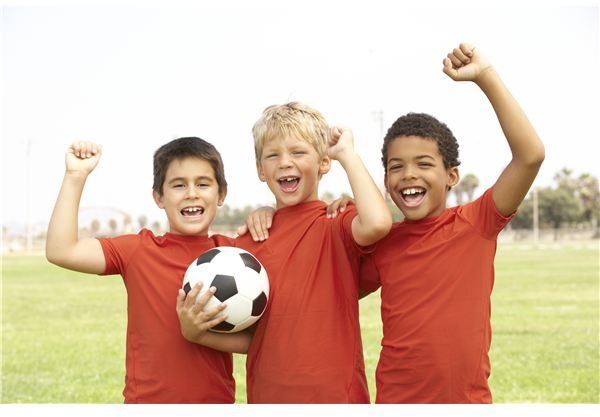Physical Education Games & Activities for Cross-Curricular Learning
Colonial Games
Many eighteenth century games are already familiar to twenty-first century students. Colonial children played tag, hopscotch and leapfrog. Encourage your students to create new versions of these well-known games.
Bring the old times into your classes with hoop-rolling. Instead of large wooden hoops, use plastic Hula Hoops. Students race against one another from one place to another, keeping the hoop rolling in front of them. Hilarity will ensue as the hoops “escape” from the children, and they have to chase them outside the shortest lane to the finish line.
Another eighteenth century game the children will enjoy is Nine Pins. Similar to bowling, the game was played on a lawn. The pins were placed in rows of three and children tried to knock them all down with a ball.
Colonial children also played with flying kites. Incorporate a math lesson into making the kites, as children explore which shapes and proportions produce the highest fliers. You can also add art and science, language arts, or history to the activity by having students create graphic review sheets on the kites for the unit topics currently under study. For example, ask students to create one section that shows the setting of a novel, another with the characters, yet another with the conflict and the resolution and so on.
Measurement, Geometry and Statistics
Bring math to the gym class by having students measure a playing field or court. Then, either have them measure again in metric units or calculate the conversions on paper. With many fields, students get the chance to practice with the larger decameters, which is often difficult in a regular classroom.
Ask students to shoot ten free throws, keeping track of their hits and misses. Have them calculate their “made” average. Using that information, have them calculate the probable results if they shot 100 times or 1,000 times.
Algebra and geometry students can calculate the angles between different positions on the gym floor and the basket. Encourage students to use math to calculate the best way to bank shots from one angle to sink their shots.
Around the World
Work with the world cultures or world geography teacher to find traditional games or dances from the countries the students will be studying. Teach those games or dances to students. Invite parents and friends or other classes to an exhibition of international games and dances in the spring.
Extend this project by working with the music teacher to research and perform traditional songs from each country, as well.
Dance, Dance, Dance!
Bring reading, history and physical education into a unified triad with historical dances. Instead of demonstrating the dances to teach the steps, provide students with textual descriptions of the dances. Students will need to read the text carefully and follow the directions to learn the dance. For those cold or rainy days when outdoor activities aren’t the most popular, divide the class into small groups and assign each group a particular dance. Allow students to research their assigned dance to provide background on the time period in which it was popular, along with the appropriate music and the steps. Give them time to learn the dances and then let them teach the rest of the class. Extend the lesson by having them make a how-to documentary video about their dance.
